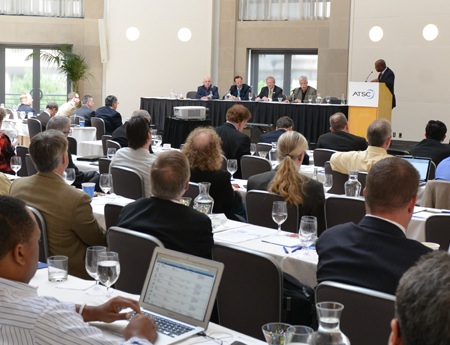The Race to Next-Gen Broadcasting

This week, stations will be getting an update on the progress being made towards the next-generation broadcast standard ATSC 3.0 during the annual meeting of the Advanced Television Systems Committee taking place May 13-14 in Washington, D.C.
The creation of ATSC 3.0 could open up a host of new business for broadcasters. Ultra HD channels, mobile broadcasts to speeding cars, interactive TV, new digital offerings, on demand services, immersive audio and even new offerings for the burgeoning Internet of Things sector are just some of the features that proponents hope could revolutionize traditional broadcasting.
But looming competitive and regulatory pressures mean that the ATSC needs to wrap up its work quickly if the industry wants to remain relevant with consumers. Broadcasters not only need a new broadcast standard to help fend off growing competition from over-the-top services. They also face the upcoming FCC spectrum auction that will require many stations to move to new frequencies.
Since ATSC 3.0 will not be compatible with the current standard used in today’s TVs and devices, many broadcasters hope that they can avoid going through two costly upgrades by implementing ATSC 3.0 around the same time as the spectrum repack.
ATSC president Mark Richer believes that can happen. “I would never bet on the government winning a race against the industry,” he said, adding that they are “on time and on track, which is pretty unusual for a standards organization. I think there is a good chance that we will have the system developed to the point where it can be considered as part of the solution to the spectrum debate.”
NEXT-GEN TIMETABLE
Richer expects the various components of the ATSC 3.0 suite of standards to become “candidate standards” by the end of the year. “2015 is the year of the candidate standard,” Richer said. “2016 will be the year for moving to a proposed standard, with a lot of testing and development and then 2017 will be the year for the completion of the standard.”
The smarter way to stay on top of broadcasting and cable industry. Sign up below
Because it opens up so many new business opportunities, the technologies for ATSC 3.0 require a radical break from the past. That will require manufacturers to start selling new TVs and other ATSC 3.0 compatible devices — something that probably won’t start happening until 2018 — and has prompted much work within the industry and among ATSC members to manage the transition period. “Work on strategies for implementation have come a long way in just the last year,” Richer said.
To update broadcasters on the features of ATSC 3.0, the group’s annual meeting will feature ATSC 3.0 Boot Camp on May 13th. “All the experts and chairs of the committees will be giving presentations, layer by layer, of the system with a lot of technical details.” Richer said.
The ATSC has decided to peel off the bottom layer of the physical layer to create a separate “discovery and signaling layer,” Richer said so that the system will be “more robust and easier to change in the future.” That document describing that layer has already been sent to a vote and should soon be a candidate standard.
MOBILE FRIENDLY
Richer said they’ve already had many preliminary discussions on the rest of the physical layer. Very notably, it will use Orthogonal Frequency Division Multi plexing, or OFDM, which will make the new standard more compatible with existing mobile networks and make it easier for broadcasters to expand their mobile offerings.
In the next layer, known as “Management and Protocols,” the group will use Internet Protocol, or IP. “ATSC 3.0 will be the first broadcast TV delivery system build on IP,” a decision that will have obvious advantages for broadcasters trying to capitalize on the rapid growth of digital media, Richer said.
In the “Applications and Presentation” layer, ATSC plans to include the ability to handle Ultra HD, HD, SD, immersive audio, closed captioning, audio for descriptive video and other features.
“On top of that in software we are probably going to be using HbbTV 2.0, which provides us with interactive capabilities,” Richer added. They will also be defining screens as if they were a Web page using HTML 5.0.
“What is so interesting about ATSC 3.0 is that it will bring in so many things,” he said. “It isn’t one thing that will make it great, but the whole system.”
